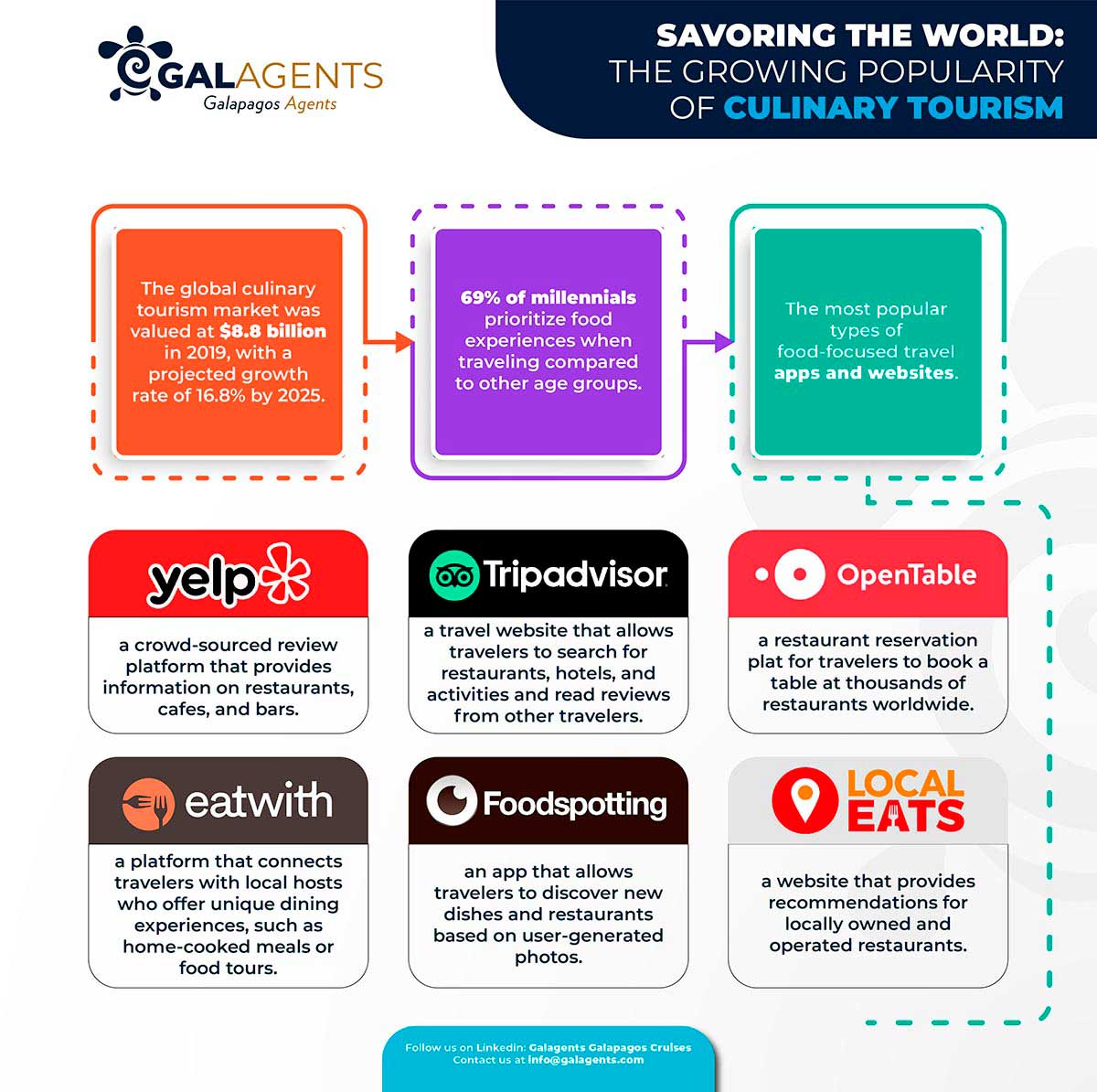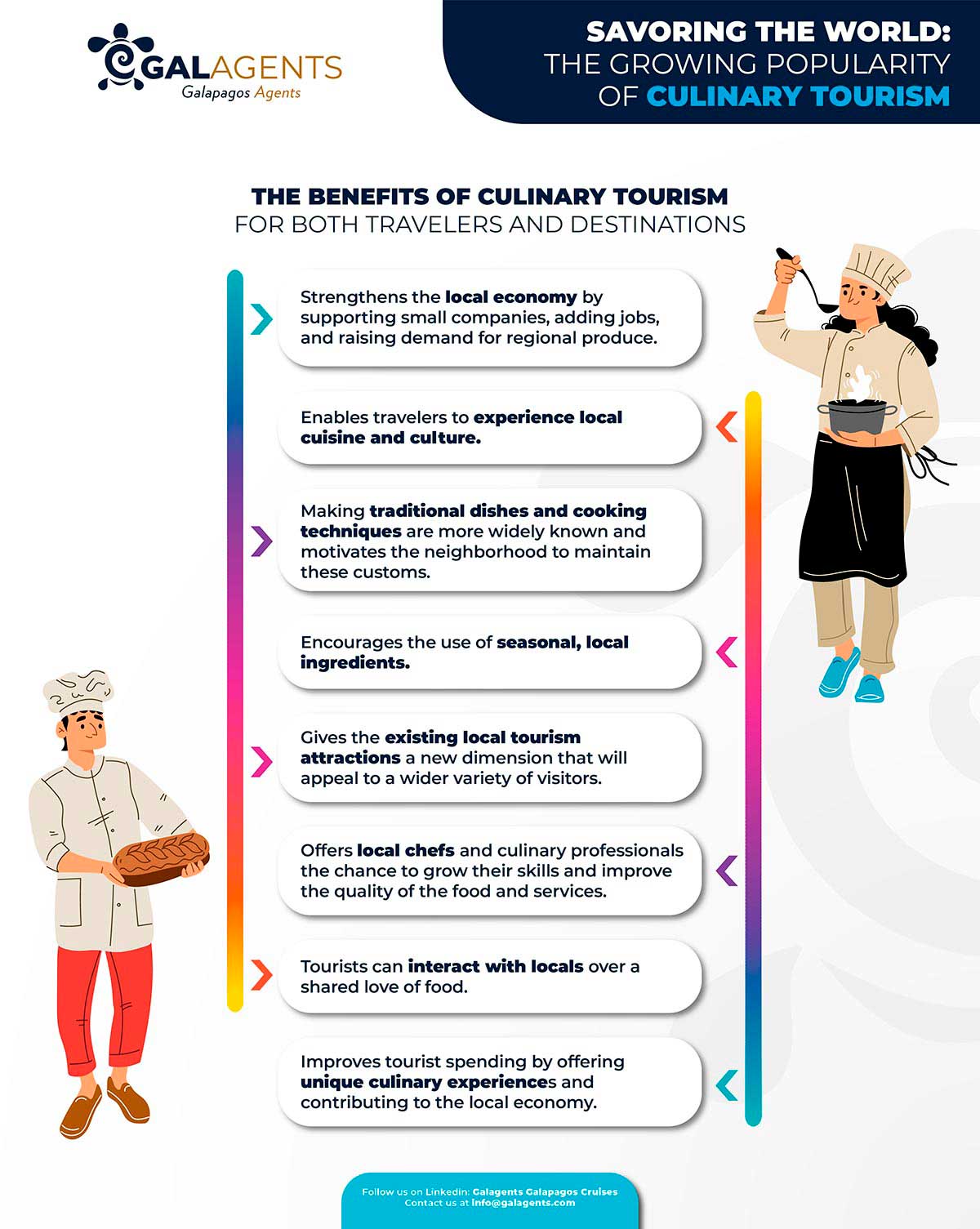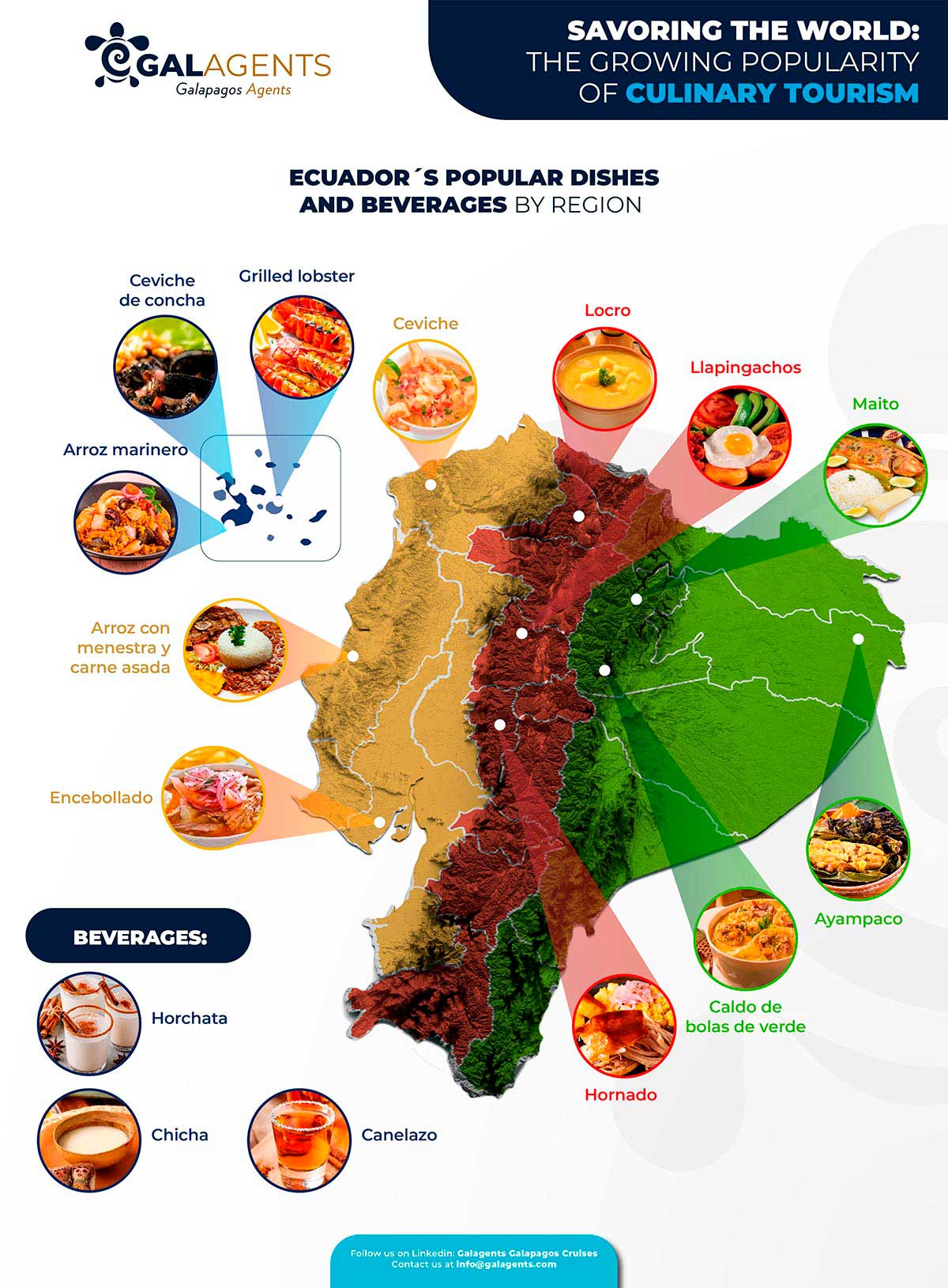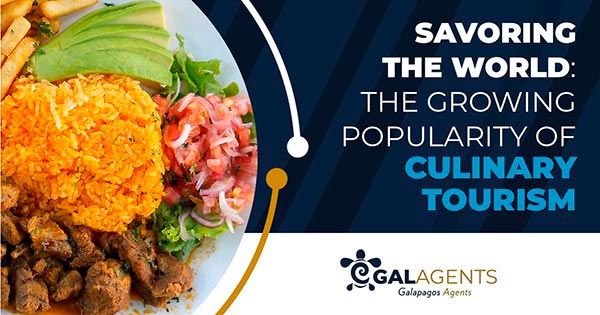Food is an integral part of any culture; for many people, it is the centerpiece of their travel experiences. As travelers become increasingly interested in immersing themselves in local cultures, culinary tourism has become a popular trend worldwide. Food has become a significant factor in deciding travel destinations, from street food to fine dining. In this article, we will explore the rising popularity of culinary tourism, its benefits, and why Ecuador is a destination that decision-makers in the tourism industry should consider. So, let’s savor the world and discover the intersection of food and travel.
Statistics and Trends
According to a World Food Travel Association report, the global culinary tourism market was valued at $8.8 billion in 2019, with a projected growth rate of 16.8% by 2025. This growth is driven by a rising interest in food culture, a desire for more authentic travel experiences, and the increasing availability of information about local cuisine through social media and online resources.
The same report also highlights the popularity of culinary tourism among millennials, who are more likely to prioritize food experiences when traveling than other age groups. Millennials are known for their interest in food and willingness to spend money on unique dining experiences, making them a key demographic for the culinary tourism industry.

Another trend in culinary tourism is the emergence of food-focused travel apps and websites, such as Yelp, TripAdvisor, OpenTable, EatWith, LocalEats, and FoodSpotting, which provide travelers with detailed information on local cuisine, restaurants, and food tours. These apps and websites are top-rated among younger travelers who use technology to plan and customize their trips.
The Benefits of Culinary Tourism
Culinary tourism offers numerous benefits for both travelers and destinations. Culinary tourism allows travelers to explore a new culture through its food. Sampling local dishes and drinks can be a way to connect with locals and gain a deeper understanding of a destination’s history, traditions, and way of life.

Culinary tourism can also be a way to support local economies and promote sustainable tourism. By patronizing local restaurants and food producers, travelers can contribute to the local economy and help preserve culinary traditions. Moreover, by choosing locally sourced and seasonal ingredients, restaurants can promote sustainable agriculture and reduce their carbon footprint.
For destinations, culinary tourism can be a way to differentiate themselves from competitors and attract new visitors. Food is a unique aspect of a destination’s identity, and promoting local cuisine can help showcase a destination’s cultural heritage and authenticity. Culinary tourism can generate additional revenue and create jobs in the hospitality and food industries.
Ecuador: A Culinary Destination to Consider
Regarding culinary tourism, Ecuador may not be the first destination that comes to mind, but it is certainly worth considering. Ecuadorian cuisine reflects the country’s rich cultural diversity, influenced by indigenous, African, and Spanish traditions.
One of the most iconic dishes in Ecuadorian cuisine is ceviche, a marinated seafood dish typically served with popcorn, and it´s not the same as the Peruvian ceviche. Other popular dishes include locro, a hearty potato soup with avocado and cheese, and churrasco, a grilled beef dish served with rice, beans, and plantains.
Ecuador also boasts a vibrant street food scene, with vendors selling everything from empanadas and tamales to roasted guinea pigs and fried plantains. In addition, Ecuadorian cuisine is known for its exotic fruits and beverages, such as chirimoya, naranjilla, and canelazo, a warm drink made with cinnamon, sugar, and fruit juice.
Moreover, Ecuador’s geographic location makes it an ideal destination for culinary tourism. The country is home to diverse ecosystems, ranging from the high Andes to the Amazon rainforest and the Pacific coast. Each region has its own culinary traditions and ingredients, making Ecuador a gastronomic paradise for food lovers.

In conclusion, culinary tourism is a growing trend reshaping the travel industry. From millennials to food enthusiasts, travelers increasingly seek authentic culinary experiences to explore a destination’s culture and heritage. Culinary tourism also offers numerous benefits for destinations, including increased revenue and the promotion of sustainable tourism. With its diverse culinary traditions and unique ingredients, Ecuador is an ideal destination for food lovers seeking an immersive culinary experience. As the world continues to recover from the pandemic, culinary tourism may be the key to reinvigorating the tourism industry, and Ecuador is a destination that should be noticed. So, let’s pack our bags, savor the world, and explore the endless possibilities of culinary tourism.

